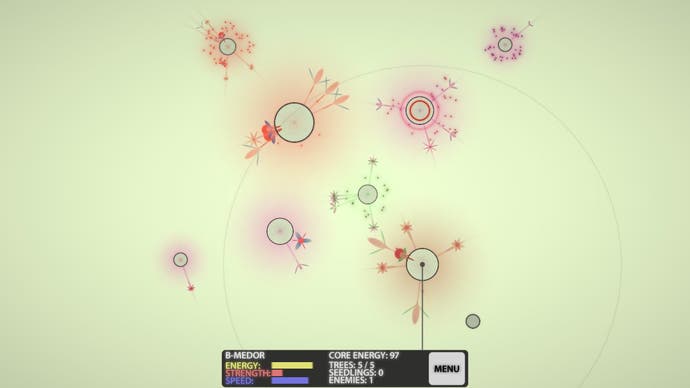Eufloria
Sow and sow.
Pretend that you are a world famous artist, and that I am the King of France. Knowing your unique ability to capture the rawest essence of your subject, I have commissioned you to draw a 100ft tall portrait of me to celebrate my 70th birthday. The special day came - all too quickly, as they do in a man's later years - and you have unveiled your picture in front of a crowd of twirling courtesans and the very top levels of the French aristocracy. The room erupts into outrage: your drawing is a childish - and gigantic - sketch of a dog turd. Calmly, you explain yourself.
"Your Majesty, I said I would capture your essence. And I find you to be odious waste. I have drawn smell lines to signify your self-serving motives and desires, and the flies are the people who surround you, suffering your repulsive nature to extract whatever nourishment life has failed to already draw from you."
"Well that's fair enough, obviously," I reply. "But I've also got arms and a big face. It would also have been nice if you'd put a crown on it, or a couple of elbows."
A similar - I'll admit, not identical - situation must have faced the makers of Eufloria, when deciding which elements of a strategy game to extract and reproduce for their minimalist, ambient game. Developed from the award-baiting proof-of-concept Dyson, Eufloria builds ever so slightly on the themes of space exploration and culture expansion. So much has been stripped from what an experienced gamer expects from the genre that it becomes interactive artwork rather than a full game: beguiling, with its stark procedural graphics and movement, and mellow wind-chime soundtrack. Elegant, with its one-handed gameplay that lets you rest your chin in your other palm and drool yourself into a unfocused reverie about the last time you went outdoors. But the self-imposed limitations do make Eufloria something of a curate's egg.

Let me take you on the journey that Eufloria asks you to follow. In the first of 25 story levels, you learn to move seedlings from asteroid to asteroid. Seedlings are your currency, your foot soldiers, and your resources. But for now, we're just moving them around, using a remarkably clever drag-and-drop system. Left-click on the centre of an asteroid with your seedlings on it, and a green orbit appears. Move the mouse from the asteroid to this orbit, and you'll select anywhere between one and all of the seedlings. Cross the green line without letting go of the mouse button, and you'll move them all. You can select a single unit with a right click - useful for scouting missions. It's an elegant and intuitive system - if the Eufloria team wrote an operating system, I'd want to use it.
But, I can tell what you're thinking. You've played a few strategy games in your time, and only having one unit is instantly alarming. But there is some variety. Seedlings inherit properties from their asteroid, and there are three properties. Energy determines a unit's physical size, its HP, and its ability to sap an enemy core (more on that later). Strength is the ability to deliver damage: not much good without energy unless you're attacking an unprotected asteroid. Speed is obvious, but the difference between slow and fast is the difference between drumming your fingers and feeling like an intergalactic plant commander. This is all represented by the size and shape of your seeds, when you're zoomed in: zoomed out, they're a pixelswarm.


